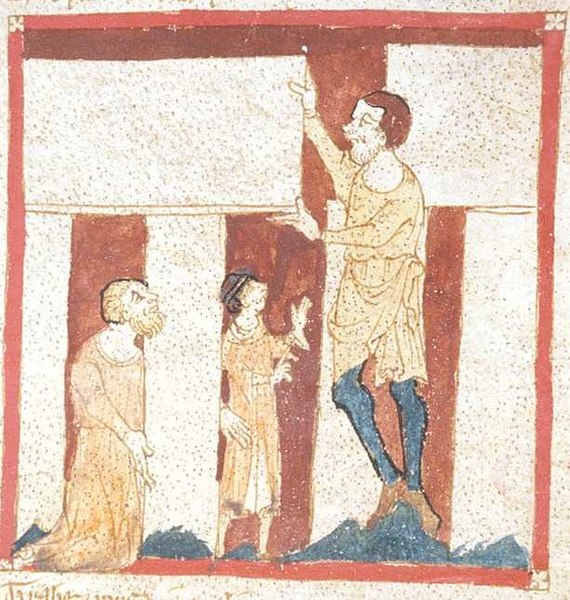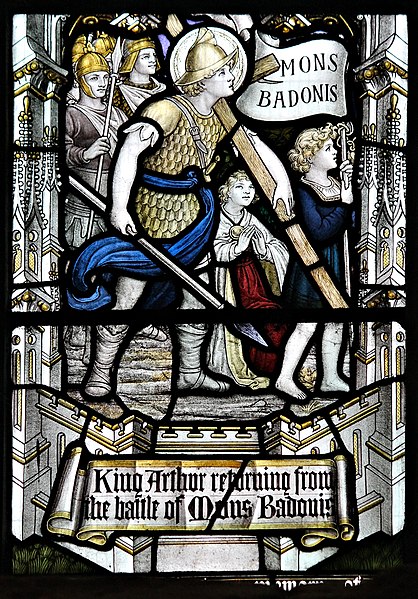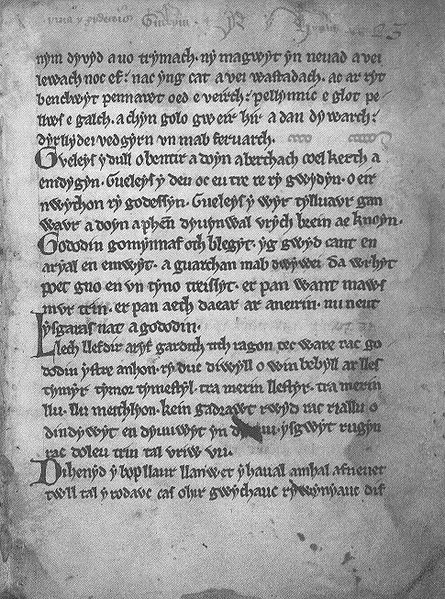Merlin is a mythical figure prominently featured in the legend of King Arthur and best known as a magician, with several other main roles. The familiar depiction of Merlin, based on an amalgamation of historic and legendary figures, was introduced by the 12th-century British pseudo-historical author Geoffrey of Monmouth and then built on by the French poet Robert de Boron and their prose successors in the 13th century.
The Enchanter Merlin, Howard Pyle's illustration for The Story of King Arthur and His Knights (1903)
The young Merlin reading his prophecies to King Vortigern in an illustration for Geoffrey of Monmouth's Prophetiae Merlini (British Library MS Cotton Claudius B VII f.224, c. 1250)
Giants help the young Merlin build Stonehenge in an illustration for a circa 1325—1350 manuscript of Wace's Roman de Brut, an expanded adaptation of Geoffrey's Historia Regum Britanniae
Emil Johann Lauffer's painting of Merlin taking the newborn Arthur to be secretly raised by Ector. Merlin is often linked to stag themes in the legend by either riding on it or transforming himself into one in an apparent association with old Celtic pagan beliefs and their Christianisation
King Arthur, according to legends, was a king of Britain. He is a folk hero and a central figure in the medieval literary tradition known as the Matter of Britain.
Tapestry showing Arthur as one of the Nine Worthies, wearing a coat of arms often attributed to him, c. 1385
King Arthur returning from the Battle of Mons Badonis (or Mount Badon). First reference to Arthur, found in early Welsh literature. Stained glass in Llandaf Cathedral, Cardiff.
Supposed former gravesite of Arthur at Glastonbury Abbey in Somerset
A page of Y Gododdin, one of the most famous early Welsh texts featuring Arthur (c. 1275)








